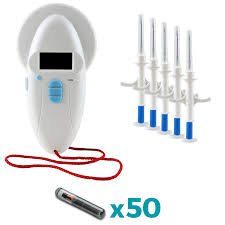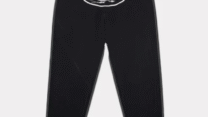
RFID Tag Readers in Hatcheries: Growth Monitoring & Release Tracking
RFID Tag Readers in Hatcheries: Monitoring Growth and Release Success
Fish hatcheries play a crucial role in global fisheries conservation and food security. Whether supporting endangered species or enhancing recreational and commercial fisheries, hatcheries must track fish from birth to release—and sometimes beyond.
From monitoring growth rates to measuring post-release survival, these systems offer real-time, high-accuracy insights that were nearly impossible a few decades ago.
Let’s dive into how RFID tag readers are transforming hatchery operations and driving smarter decisions in aquatic science.
Why Tracking Fish in Hatcheries Matters
Hatchery fish face intense scrutiny. Stakeholders—from ecologists to government agencies—need to know:
- How well the fish are growing
- How many survive to release
- Whether hatchery-raised fish return to spawn
- If released fish outcompete wild ones
Without precise data, hatchery managers risk poor outcomes, wasted resources, or ecological imbalance.
What is an RFID Tag Reader?
It is a system that detects and records data from Passive Integrated Transponder (PIT) tags implanted in fish. These tags emit a unique ID number when they pass through the electromagnetic field of a reader’s antenna.
Unlike acoustic or satellite tags, RFID systems:
- Require no internal power source
- Are cost-effective for small-bodied fish
- Provide reliable ID capture at close range
- Can be deployed at fixed locations in tanks, channels, or rivers
This makes them ideal for hatchery environments, where thousands of fish need to be tracked accurately and efficiently.
Step-by-Step: How RFID Tag Readers Work in Hatcheries
Here’s how the system typically functions in a hatchery:
- Tagging the Fish
Hatchery workers implant small PIT tags (usually 12 mm long) into fish using a sterile needle. Tagging often occurs when fish reach a certain size threshold—typically 60 mm or larger for optimal retention. - Setting Up RFID Antennas
Fixed antennas are installed in strategic locations—like raceways, transfer channels, or release pipes. These antennas emit a weak electromagnetic field. - Automated Detection
When tagged fish swim past the antenna, their tag activates and transmits a unique ID code. The RFID tag reader instantly logs this data, along with the date and time. - Data Collection and Analysis
All reads are stored and can be connected to growth databases, release logs, and environmental sensors to build a detailed lifecycle record.
Monitoring Fish Growth Over Time
Tagging fish early in their lifecycle allows for continuous growth tracking. By placing RFID tag readers at feeding stations or sorting units, hatchery managers can:
- Record how often individual fish eat
- Monitor weight gain during growth phases
- Detect outliers (fast or slow growers)
- Reduce stress from manual handling
For example, a 2022 study published in Fisheries Research showed that using these tag readers reduced handling time by 40% and improved growth tracking accuracy in juvenile rainbow trout populations.
Tracking Survival and Release Success
One of the most powerful uses of RFID tag readers in hatcheries is understanding post-release survival. By installing readers:
- At release points: Track which fish were released and when
- Downstream in rivers: Measure how many survive migration
- At adult return sites: See how many return to spawn
In the Columbia River Basin, a large-scale RFID-based study of salmon and steelhead trout revealed a 3.1% average return rate for hatchery-released fish over five years—vital data for regulatory agencies and conservation groups.
Benefits of RFID Tag Readers in Hatchery Settings
Here’s why so many hatcheries are investing in this tech:
✅ Non-lethal, passive tracking
✅ Individual fish ID over long periods
✅ Automated, low-maintenance data collection
✅ Cost-effective at scale
✅ Integration with real-time analytics platforms
By enabling precise growth and survival data, RFID systems help managers optimize feeding, identify best-performing genetic lines, and ensure fish are ready for life in the wild.
Key Challenges to Consider
Of course, even the best tech has trade-offs. Here are a few hurdles:
- Tag Size Limitations: Small fish can’t be tagged until they grow enough for safe implantation.
- Read Range Constraints: Most readers work within a 1–2 ft range, requiring precise antenna placement.
- Environmental Interference: High mineral content in water or electrical noise from pumps can impact accuracy.
- Data Management: Thousands of detections require robust backend systems for storage, filtering, and analysis.
Solutions include using noise filters, integrating with cloud-based databases, and combining RFID data with visual monitoring systems.
Real-World Use Case: U.S. Fish & Wildlife Service
The Abernathy Fish Technology Center in Washington has successfully implemented a large-scale RFID tag reader system to monitor steelhead trout. They’ve tracked fish from fingerling stage to ocean entry and back again, measuring success rates, adjusting breeding protocols, and validating habitat suitability.
According to their internal reports, automated RFID-based monitoring increased tagging efficiency by 50% and cut labor costs by nearly 30%.
Future of RFID in Hatchery Management
Looking ahead, RFID systems are expected to integrate even more deeply with IoT devices and cloud-based dashboards. Imagine:
- Alerts for underfeeding or disease based on movement patterns
- Predictive analytics for return rates based on early behavior
- Automated sorting of fish by growth metrics in real-time
Final Thoughts
Whether you’re running a small conservation hatchery or a large-scale operation, RFID tag readers are no longer optional—they’re essential. These systems offer the kind of granular, accurate, and scalable data that modern fishery management demands.
By tracking individual fish throughout their lifecycle, hatcheries can refine operations, improve survival outcomes, and contribute more effectively to conservation goals.







